
Canada's 'iceberg capital' celebrates Discovery Day
We can safely say there's no other province quite like it in Canada.
Canada's youngest province celebrates Discovery Day on the Monday nearest to June 24, commemorating the explorer John Cabot's encounter with the island in 1497. In the centuries since, Newfoundland and Labrador has remained unique, boasting a rich culture and wealth of history.
Here are 15 things to know about Newfoundland and Labrador.
1) EASTERNMOST POINT OF NORTH AMERICA: CAPE SPEAR
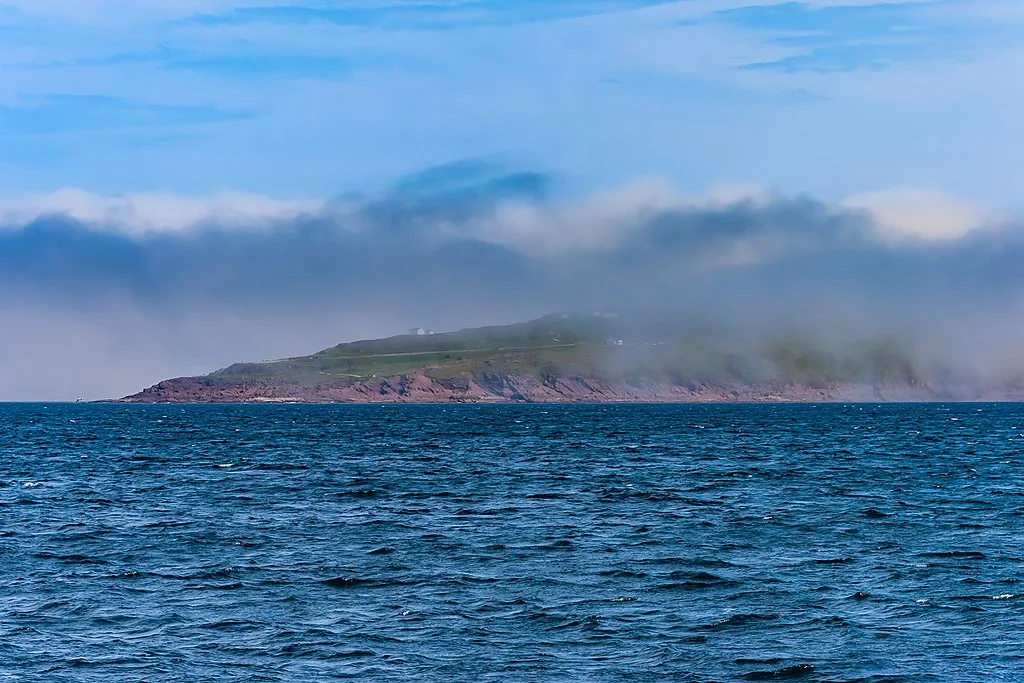
Cape Spear, Nfld. Image: Michel Rathwell/Wikimedia Commons.
If you stand at the cliff's edge at Cape Spear at sunrise, you'll feel the sun's rays on your face before anyone else on the North American continent.
Not only is the cape, a stone's throw away from the capital St. John's on the Avalon Peninsula, the eastern-most part of Newfoundland, it's also the eastern-most point of Canada and North America (so long as you don't count Greenland as being part of the North American continent, and aside from geography nerds, who does?).
The lighthouse at Cape Spear, as it happens, is also the oldest-surviving in the province, and is a National Historic Site.
2) THE FOGGIEST PLACES IN CANADA (AND THE WORLD): ARGENTIA AND THE GRAND BANKS
Nobody in Newfoundland would be surprised to hear it's a bit foggy there, but two places on or near the island claim a pair of unhappy crowns.
The first is Argentia, a little north of Placentia on the western shore of the Avalon Peninsula, which the Canadian Encyclopedia says is the foggiest place in Canada, with a gloomy 206 average fog days per year.
Quite a ways out to sea, however, the Grand Banks do one better. With the intersection of the cold Labrador Current and the warmer Gulf Stream, enough fog condenses at the site to make it the foggiest place on Earth, according to several sources (including to Science Daily).
3) THE DEADLIEST NATURAL DISASTER IN RECORDED CANADIAN HISTORY: NEWFOUNDLAND HURRICANE
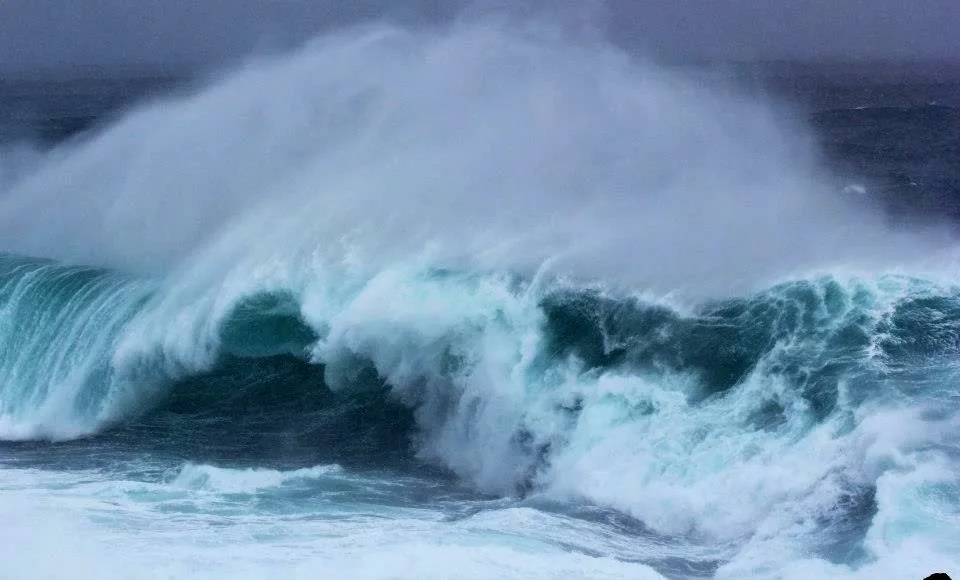
Image: Alana Barnes.
This catastrophic storm has no official name or classification, but in September 1775, it roared into the history books as the deadliest hurricane on record in Canada.
Known simply as the Newfoundland Hurricane, the storm is blamed for the deaths of 4,000 people, mostly at sea, along with the loss of numerous fishing boats, and two British navy ships -- a critical blow that came as the American Revolution in the nearby 13 colonies was in its opening stages.
On the shores of Newfoundland itself, storm surge up to 10 metres was reported, according to this look-back from NOAA.
4) THE TITANIC CONNECTION
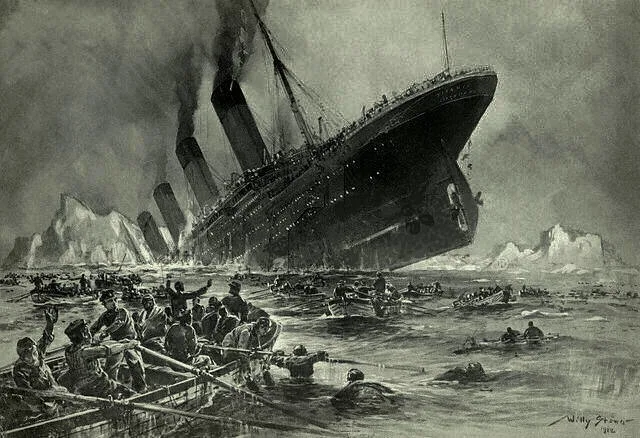
Image: Wikimedia Commons.
Probably the most infamous naval disaster in the popular imagination, the doomed Titanic has some connection to Canada's eastern-most province.
When the supposedly unsinkable ship struck that fateful iceberg on the night of April 14, 1912, the closest land was Newfoundland's Cape Race, some 600 kilometres away. As well, the initial SOS was relayed through a wireless station in Newfoundland, according to the Canadian Press.
Some 1,500 people lost their lives in the disaster, a little more than two-thirds of those aboard.
5) THE ICEBERG CAPITAL OF CANADA
Newfoundland's position in the North Atlantic makes it a prime viewing location for the gigantic icebergs that drift by in the spring and summer months.
Some 90 per cent of the 'bergs come from glaciers in Greenland, with the rest originating from the Canadian Arctic. They just about throng the waters from Labrador down to the southeast coast, making them common sight for towns along the way (Twillingate holds claim to being the "Iceberg Capital of the World." We're not sure how true that is, but international media seem to agree).
They're considered such a tourist draw, the province's tourism department runs an online iceberg tracker.
WATCH BELOW: ONLOOKERS CAN'T CONTAIN THEIR EXCITEMENT AS ICEBERG COMPLETELY FALLS APART
6) NEWFOUNDLAND AND LABRADOR IS HOME TO MORE THAN 45,000 INDIGENOUS PEOPLE
Some 45,700 people in Newfoundland and Labrador are Indigenous people, according to the 2016 census.
That includes Mi'Kmaq people, mostly on the island, along with Innu people, Inuit people, and Métis people in Labrador, according to Indigenous Tourism.
When the first Europeans arrived on the island, a large part of the island was inhabited by Beothuk people. The Beothuk culture is considered extinct, and the last-known Beothuk woman is believed to have died in 1829 of tuberculosis (according to the Canadian Encyclopedia).
7) THE VIKINGS WERE THE FIRST EUROPEANS TO SET FOOT IN NEWFOUNDLAND
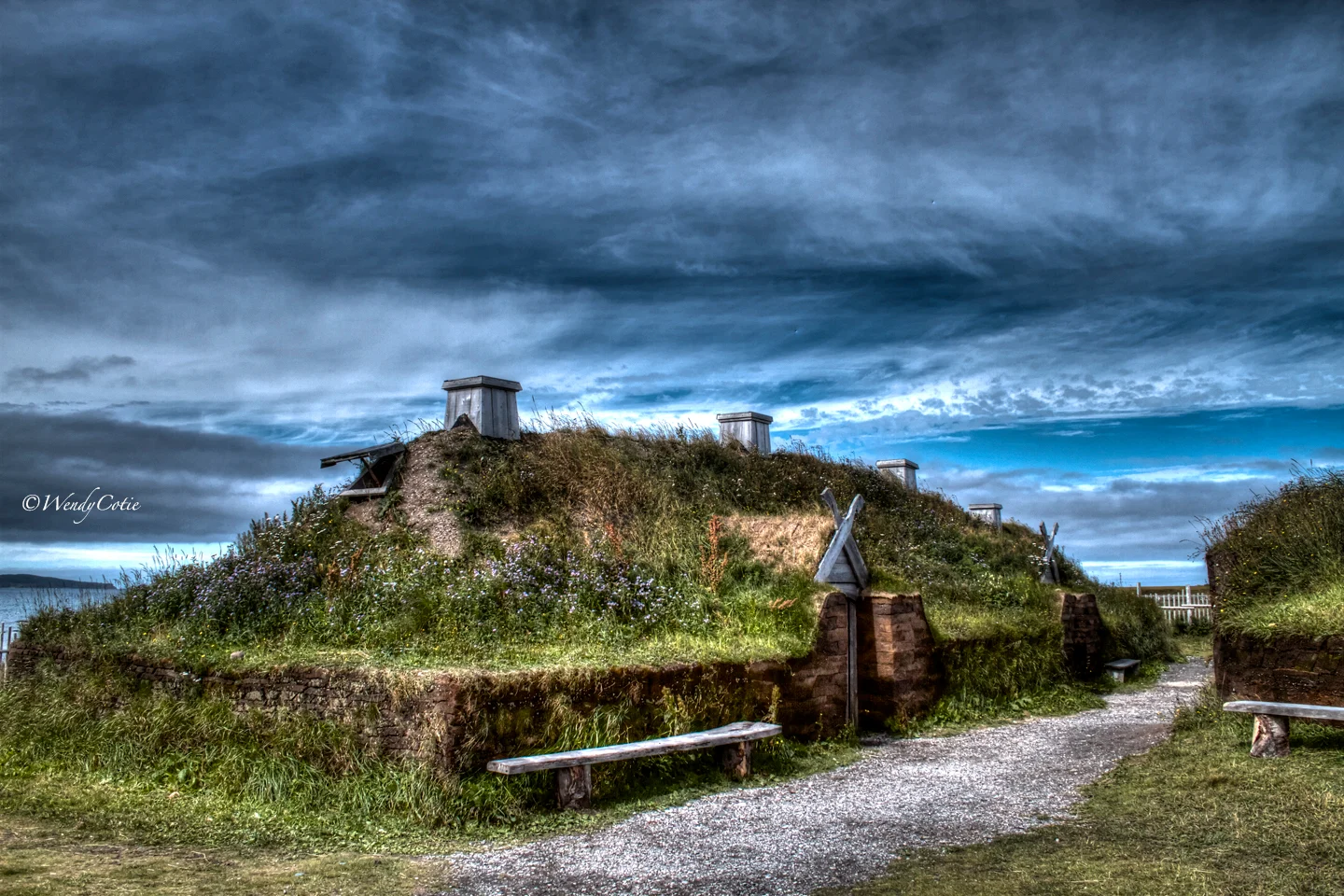
Viking longhouse at L’Anse aux Meadows, Nfld. Image: Wendy Cotie.
Long before the English -- about five centuries before, actually -- a band of Norse travellers became the first Europeans known to have landed in North America.
Arriving at what is now called L'Anse aux Meadows at the tip of Newfoundland's Great Northern Peninsula around 1000 C.E., the Vikings built a small settlement that included eight buildings, including a forge and workshops.
They abandoned the site a few years later, and it is now a World Heritage Site and National Historic Site.
8) FIRST ENGLISH EXPLORER TO SIGHT NEWFOUNDLAND: JOHN CABOT
We say "English" tongue-in-cheek here, as Cabot -- real name Giovanni Caboto -- was born in Italy. But he did sail on behalf of England, becoming the first person to sail from that nation to Newfoundland. His first attempt in 1496 was a failure, but he did reach the island in 1497, beginning five centuries of European presence there.
The fate of his third and final attempt in 1498 is uncertain, as the historical record is very spotty. Some sources, like the Canadian Encyclopedia, surmise that while at least one of his ships returned, the explorer himself never did. However, other sources, (like Heritage Newfoundland) say there is evidence he may have returned two years later.
9) NEWFOUNDLAND AND LABRADOR WAS ONCE A SEPARATE DOMINION
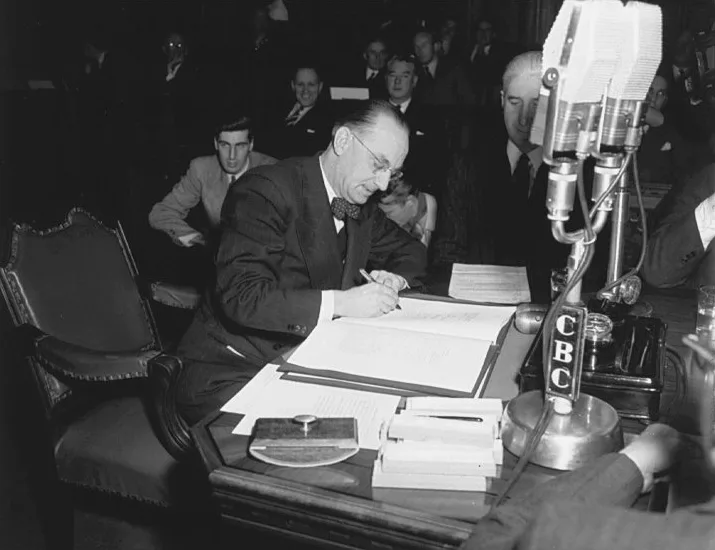
Joey Smallwood signs the agreement by which Newfoundland joined Canada. He would become its first premier. Credit: NFB/Library and Archives Canada/Wikimedia Commons
What's now Canada's eastern-most province was once its own independent dominion, governed separately from Canada and considered its legal equal.
Newfoundland and Labrador was given dominion status in 1907, but economic problems prompted the U.K. to suspend its self government in 1934. Not long after the Second World War, Newfoundlanders eventually voted, in a hard-fought and contentious referendum, to join Canada rather than resume its self-government or continue under British commission rule. It officially entered confederation in 1949 as Canada's 10th province.
10) THE OLDEST CLUSTER OF FOSSILS ON EARTH

Image: Kristine Hibbs.
Newfoundland's rugged, rocky coastline holds many secrets, but also answers to the ultimate question of how life evolved on Earth.
At the southern tip of the Avalon Peninsula, the cliffs of Mistaken Point are jam-packed with as many as 10,000 fossils, from a few centimetres in size to as long as a fully-grown human being. Dating back to the Ediacaran Period (580-560 million years ago), it's the largest-known collection of large fossils on Earth. It was named a World Heritage Site in 2016.
Speaking of World Heritage Sites ...
11) NEWFOUNDLAND HOSTS FOUR WORLD HERITAGE SITES
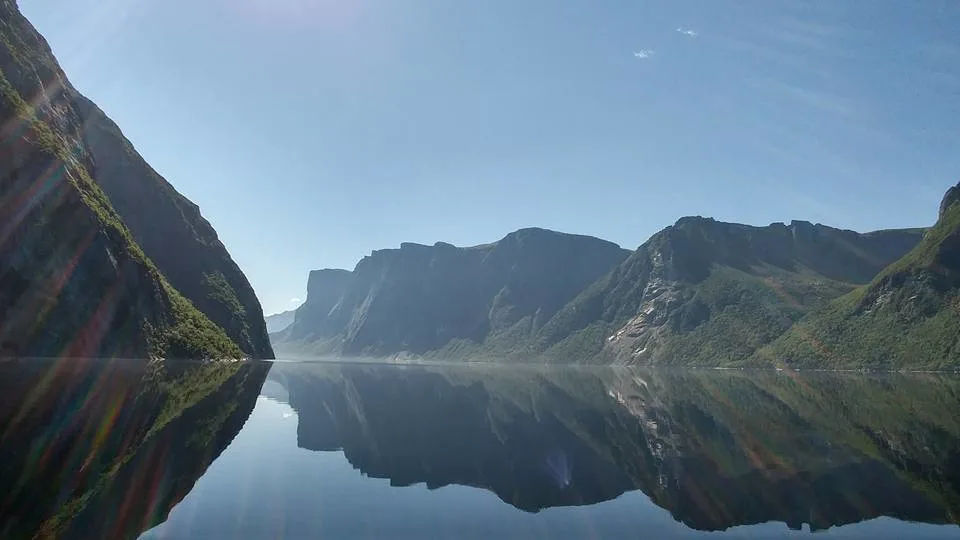
Western Brook Pond within Gros Morne National Park. Photo: Linda Casey Harrison.
Despite its relatively small size and population, Newfoundland hosts as many as four World Heritage Sites, more than any other province except Alberta.
Of those, two are cultural sites (the Viking outpost at L'Anse aux Meadows and the 16th-century Red Bay Whaling Station in Labrador), and two are natural sites (Mistaken Point, up above, and the sprawling Gros Morne National Park on the west coast).
12) ST. JOHN'S HOSTS ONE END OF THE TRANS-CANADA HIGHWAY
St. John's is the beginning (or the end, depending on what direction you're headed) of the Trans-Canada Highway, the longest of its kind in the world.
It links the Newfoundland and Labrador capital with B.C.'s capital, Victoria, 7,821 kilometres away, though with a couple of ferry rides in between. In Newfoundland, Route 1, as it is known in the province, runs 903 kilometres from St. John's to Channel-Port aux Basques.
13) NEWFOUNDLAND HAS ITS OWN WAR MEMORIALS IN FRANCE
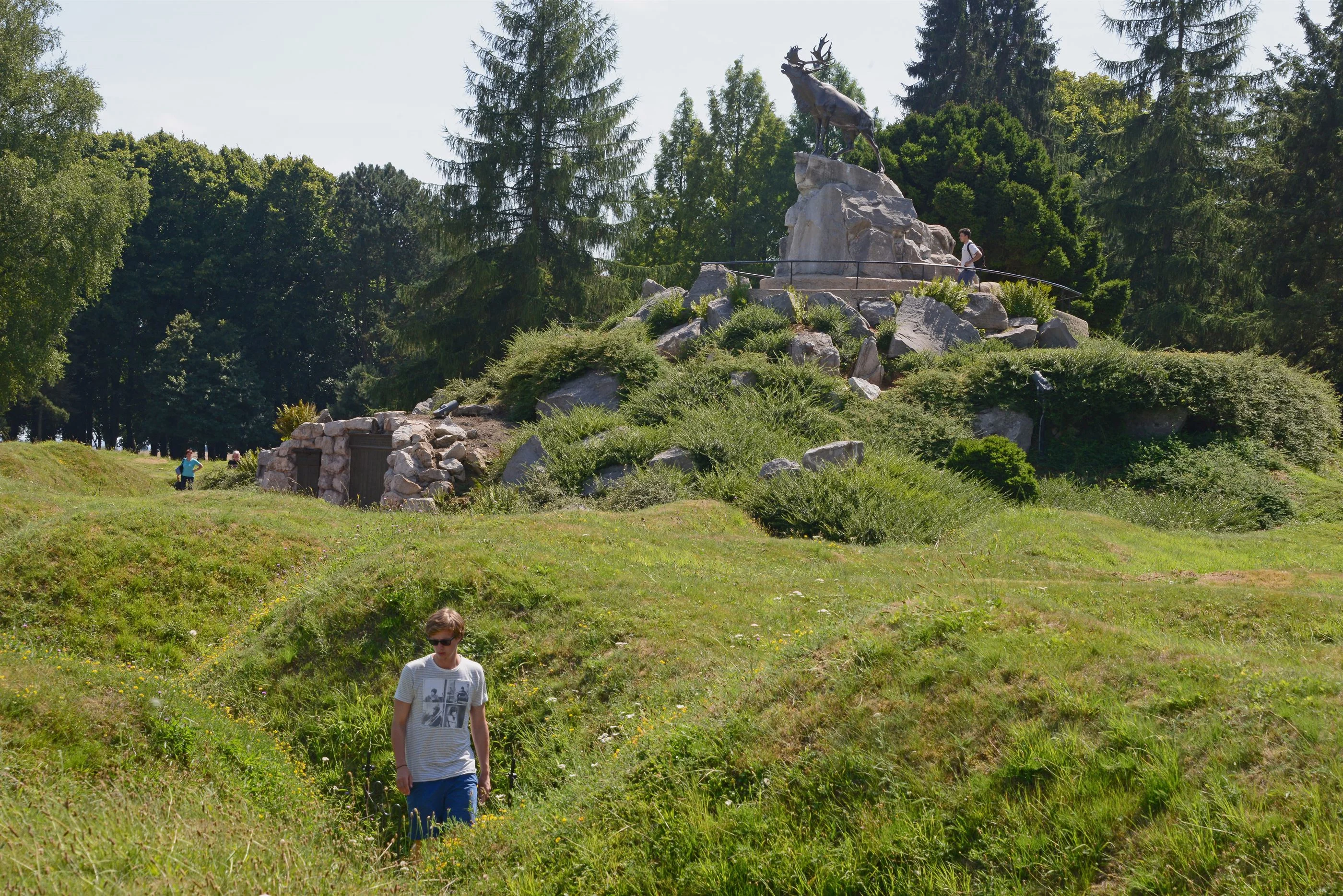
The Beaumont-Hamel Newfoundland Memorial, France. Image courtesy Veterans Affairs Canada.
Newfoundland and Labrador was its own dominion when it fought both world wars, and its soldiers endured as much as their Canadian counterparts did.
Newfoundlanders and Labradorians who fell during the First World War are honoured by a series of five monuments in northern France and Belgium. The largest, the Beaumont-Hamel Newfoundland Memorial, stands at the site of the disastrous battle of the same name, where more than 90 per cent of the First Newfoundland Regiment lost their lives in just 30 minutes. Opened in 1925, the memorial lists the names of 814 members of Newfoundland Regiment, the Newfoundland Royal Naval Reserve, and the Mercantile Marine who were killed in the First World War and did not have known graves.
14) FRANCE IS JUST A FERRY RIDE AWAY

Aerial shot of St. Pierre Island. Doc Searls/Wikimedia Commons.
This one is cheating a bit, but French territory is French territory, and the Overseas Collectivity of Saint Pierre and Miquelon is very much French territory. In fact, it is the last surviving remnant of New France, which once stretched from Newfoundland through Quebec on through the interior of the continent.
Home to some 6,000 people, the islands are 25 km away from the Burin Peninsula, and is a short ferry ride away from Fortune, Nfld.
15) NEWFOUNDLAND FAMOUSLY HAS A WEIRD TIME ZONE
Another part of the province's culture that predates Confederation, Newfoundland has its own time zone, famously off by half an hour from its neighbour, Atlantic Time, which is observed in the Maritime provinces and most of Labrador except for a small southern slice that sets its clocks according to the rest of the province.











